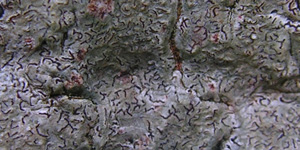Sticta fuliginosa s. lat., Distribution & Ecology
Distribution
It is very early days to say much about the distribution of the species in
Sticta fuliginosa s. lat., but a brief summary of the knowledge to date is given below. Any further information welcome.
- Sticta ciliata: Magain & Sérusiaux did not collect this species during their field trip to Devon, but did collect it from Country Kerry in Ireland. Since then it has been identified widely from western Britain and Ireland. Brain Coppins, after examining specimens in Edinburgh Botanic Gardens Herbarium, suggests that this species is widespread in the most oceanic areas of the western Highlands in Scotland, but does not extend to the east of the distribution of Sticta fuliginosa s. lat. in the Highlands. In recent field trips I have found it to be widespread in North Wales and have also found it in North Devon (Dunsland), Somerset (Horner Combe) and the Lake District (Gowbarrow Park) in England. It was typically very abundant were it occurs. I have identifiable photographs from North Cornwall (Millook) and the Lake District (Borrowdale) in England and from the Burren, Co Clare and Marble Arch, Co Fermanagh in Ireland. The species is likely to be found throughout the most oceanic parts of the distribution of Sticta fuliginosa s. lat.
- Sticta fuliginoides: this species was found to the south west of Exmoor by Magain & Sérusiaux, as well as in south west Ireland. The species was probably not collected much in the past and Brain did not find any specimens in Edinburgh Botanic Gardens Herbarium. I have found it in the field, but not as frequently as Sticta ciliata. It was occasional in North Wales, I have found it once in Horner Combe, north Exmoor, while I have a picture from North Cornwall (Millook). It appears, so far, to be much less widespread than the other species. To date, the only definite record from further north in Britain is from from Dunvegan Park, Isle of Skye (see BLS Bulletin 118), but Brian Coppins is familiar with the funnel shipped thalli of this species from Scotland. So far this taxa appears to be the rarest of the three found to date in Britain.
- Sticta fuliginosa s. str.: this species was recorded on the western side of Dartmoor by Magain & Sérusiaux, as well as in south west Ireland. Brain found that there were specimens in Edinburgh Botanic Gardens Herbarium, from further east in the Highlands than Sticta ciliata. I have found it in the field in every site examined, growing with either Sticta ciliata and Sticta fuliginoides. It was invariably less frequent than both species. So far I have field records from several sites in North Wales and at Horner Combe, north Exmoor and in North Devon (Dunsland). This species probably occurs throughout the range of Sticta fuliginosa s. lat.
Ecology
The following observations were made during my recent field trips.
- Sticta ciliata: Magain & Sérusiaux noted that this species was especially found in the most humid localities. This was also the case in the North Wales, Devon and Somerset sites where I have seen it. In the exceptionally rich ravine of Ceunant Llennyrch in North Wales, Sticta ciliata was abundant deep in the ravine, but was totally replaced by Sticta fuliginoides in the upper more exposed areas. In humid conditions it appears to be quite a rapid colonising species, more so than the other two species. In Horner Combe, it was observed as forming large colonies on recently fallen Ash branches. These must colonise fast and will soon be displaced by big mosses and Peltigera species. At Ceunant Llennyrch, Maentwrog it colonised into a monitoring quadrat and developed apothecia between 2005 and 2014.
- Sticta fuliginoides: this species has so far been only found in less humid and more open situations than Sticta ciliata. The only two sites at which it has been recorded as frequent, (the upper section of Ceunant Llennyrch, Maentwrog & Dunvegan Park, Isle of Skye), lacked Sticta ciliata all together. In other sites it occurred with Sticta ciliata but was much more infrequent.
- Sticta fuliginosa s. str.: this species appears quite tolerant and was found equally in sites with either Sticta ciliata or Sticta fuliginoides. So far it was also always less frequent than either species when it occurred with them. In Horner Combe it appears to be more typical of larger older trees; it may be a slower colonising species than Sticta ciliata and be more dependent on older trees. It appears also to extend further east in the Highlands than the more oceanic Sticta ciliata.



